Category: Net Sampling
-
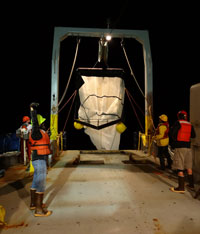
Matsuda-Oozeki-Hu Trawl
The Matsuda-Oozeki-Hu trawl (MOHT) is a fixed-frame trawl with a 5.5 m2 mouth opening with a cambered V-type depressor that can be towed at speeds up to 4.5 knots. It is designed to capture a variety of organisms including krill, late larval and juvenile fishes, and micronekton. The Oozeki data are used to groundtruth the…
-

PRPOOS Net
A Planktonic Rate Processes in Oligotrophic Ocean Systems (PRPOOS) net, formerly known as the Soutar-Hemingway Animal Trap or “SHAT” (Kramer 1972), is a 202 µm mesh net that has a 50 cm diameter single frame opening and is 3 m in length. The PRPOOS net deployment is a vertical tow lowered into the water to…
-
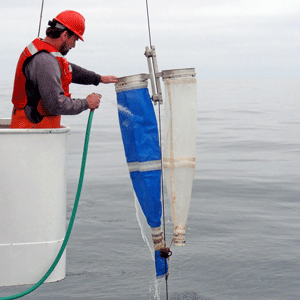
Pairovet Net
A Pairovet vertical plankton tow is performed at all stations inshore of, and including station 70. The Pairovet net fishes from 70 meters to the surface (depth permitting) using paired 25 cm diameter 150 um mesh nets. The technical requirements for Pairovet tows are: Descent rate of 70 meters per minute, ascent rate of 70…
-
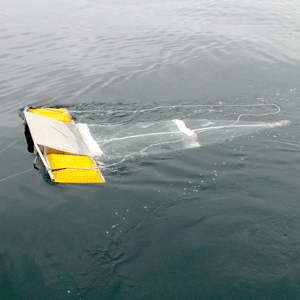
Manta Net
The twin winged continuous-flow surface tow, referred to as MT in the CalCOFI database, samples ~8cm of the ocean surface, minimizing wake disturbance from the ship. The MANTA Net is an improved design from the Neuston Net and is capable of continuous-flow collection of organisms at the ocean surface.
-
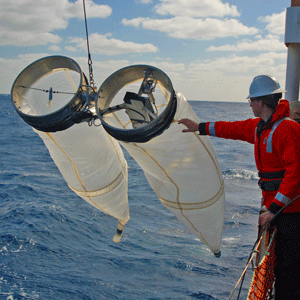
Bongo (CalBOBL) Net
Southwest Fisheries Science Center collects CalBOBL net tow samples for all CalCOFI and SCCOOS stations. The CalBOBL (Bongo) net, referred to as CB in the CalCOFI database, has been the standard sampler since replacing the CAL1MOBL in 1978. The net frame is connected to a central yoke which is swivel-shackled to the winch tow cable.…
-
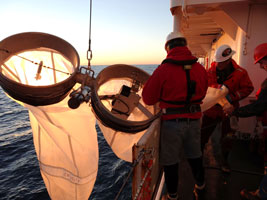
Net Sampling
Net Sampling Ichthyoplankton sampling is done on all survey cruises and processing of these samples is done at the Southwest Fisheries Science Center (SWFSC) laboratory in La Jolla, California. There, plankton displacement volumes are obtained for each sample and the fish eggs, larvae, and juveniles are separated from the invertebrate zooplankton, and subsequently identified, staged,…